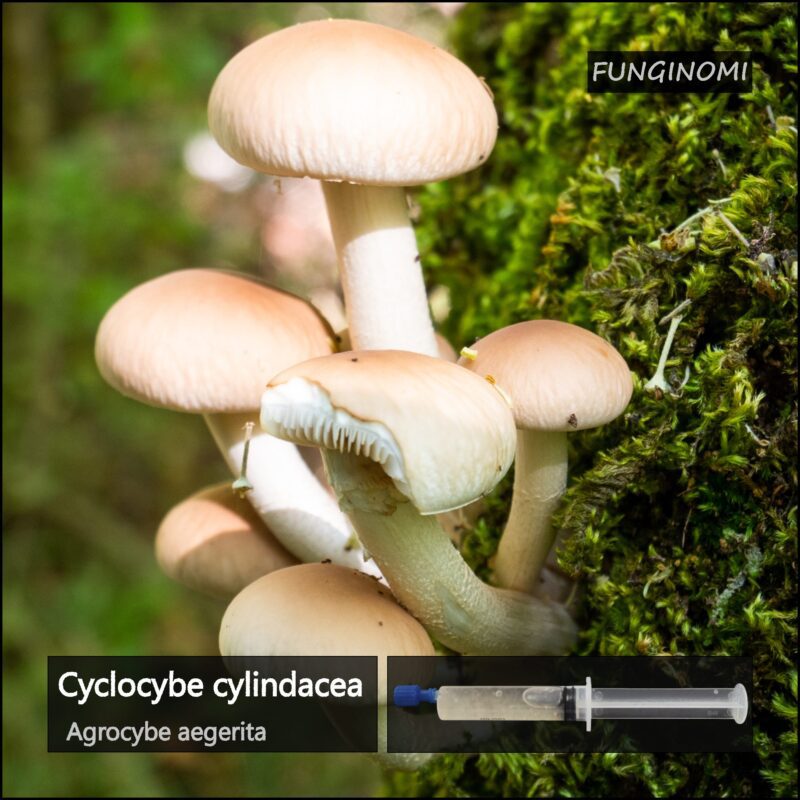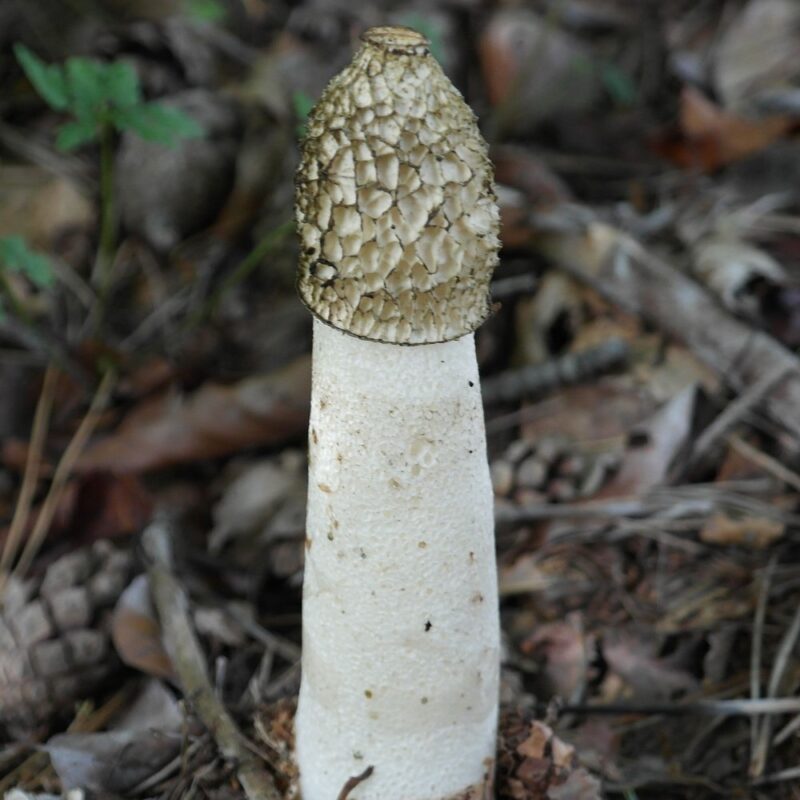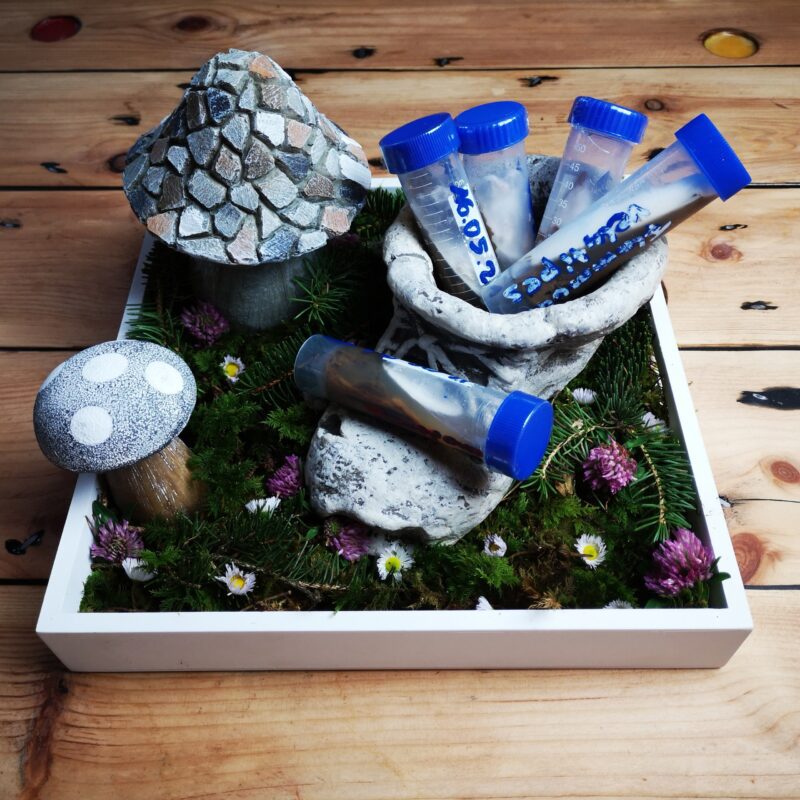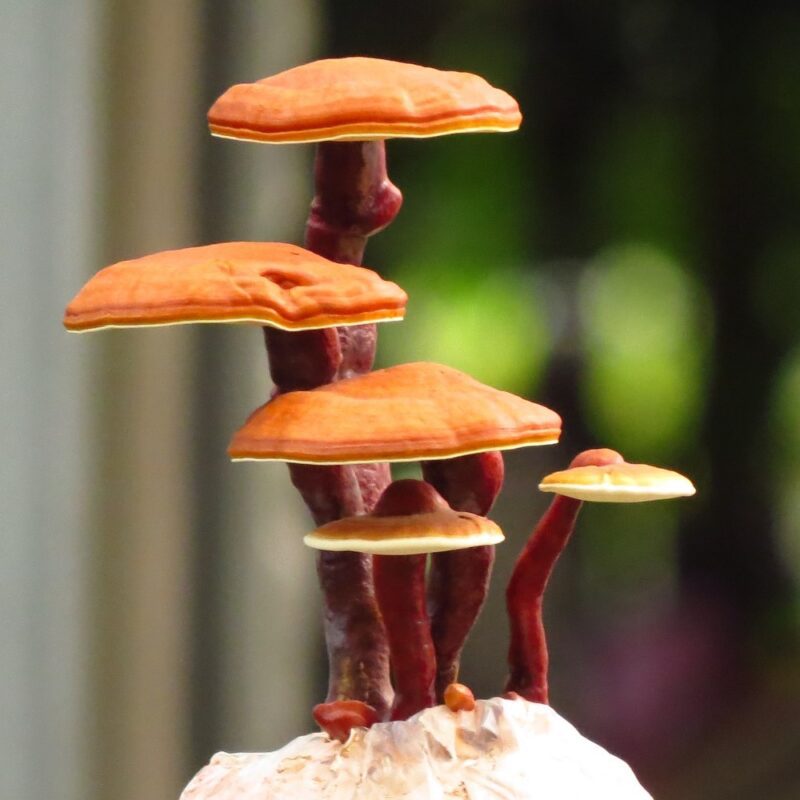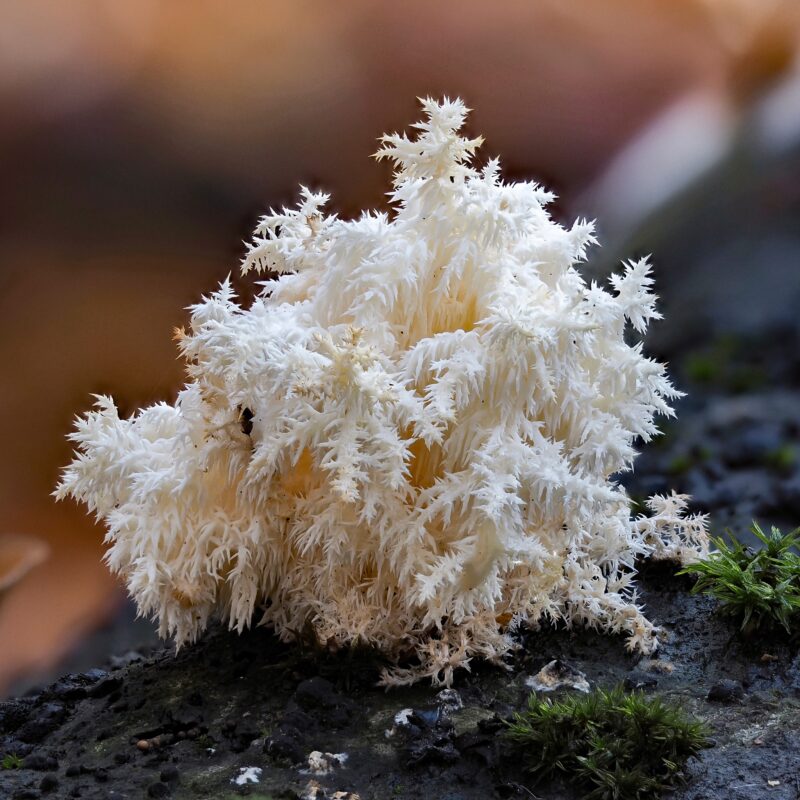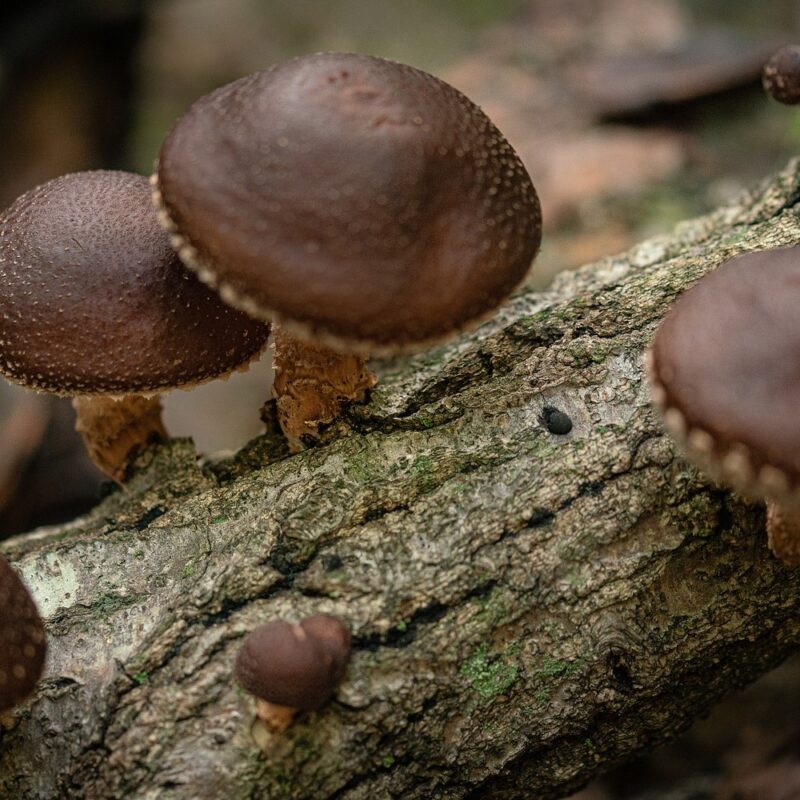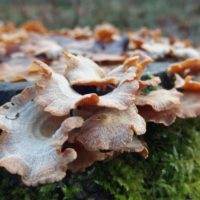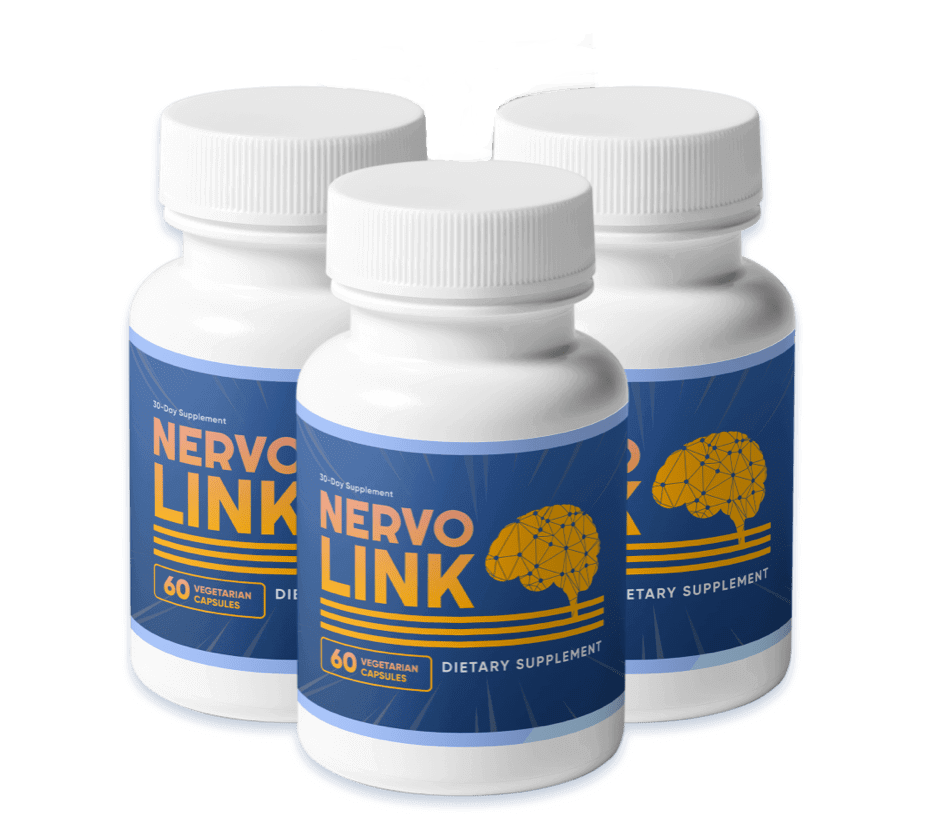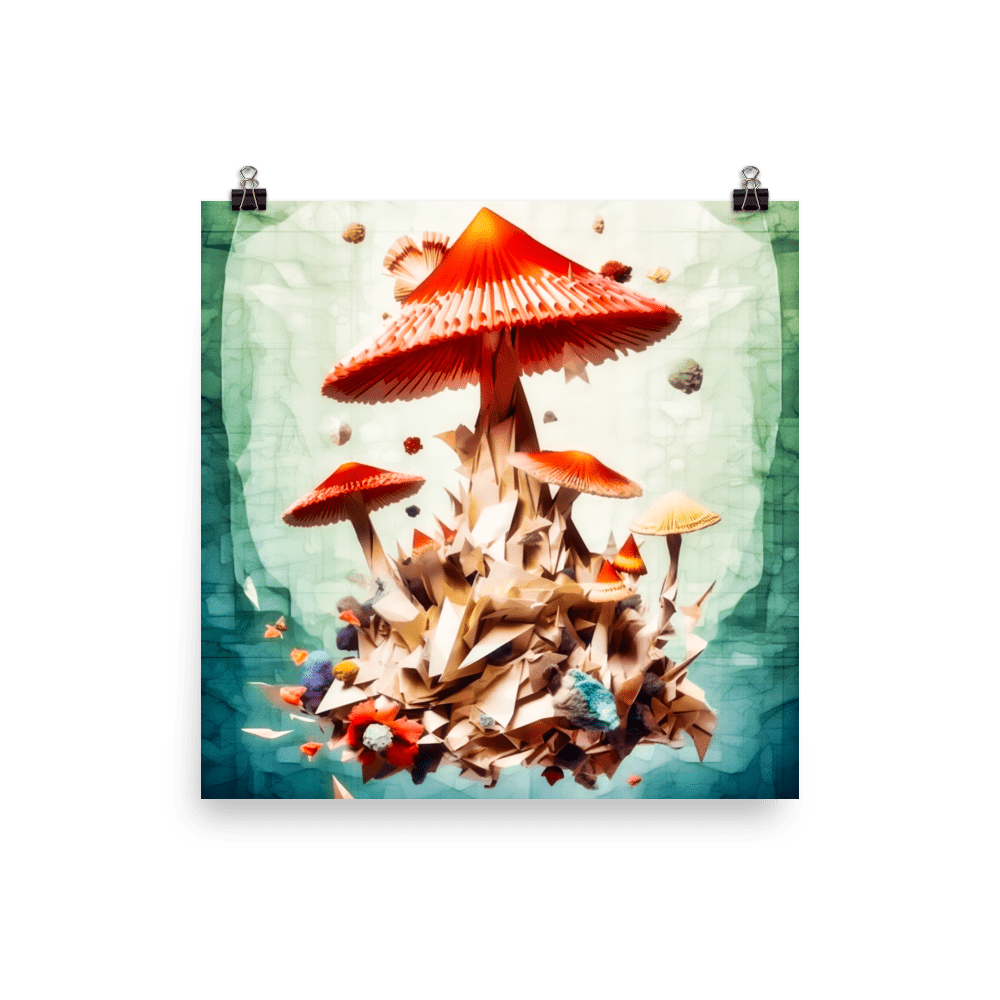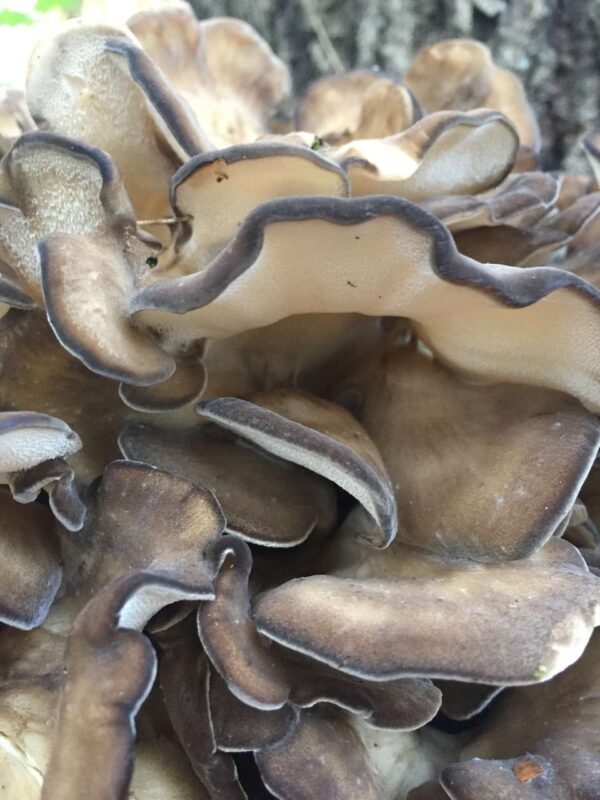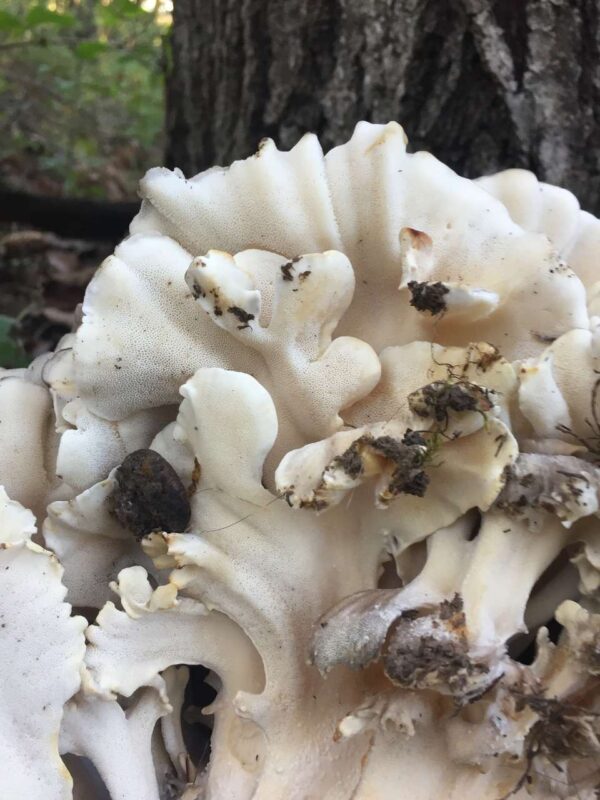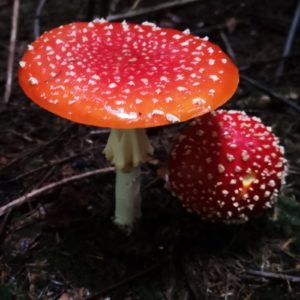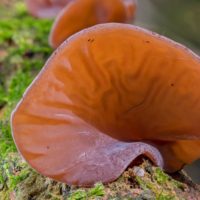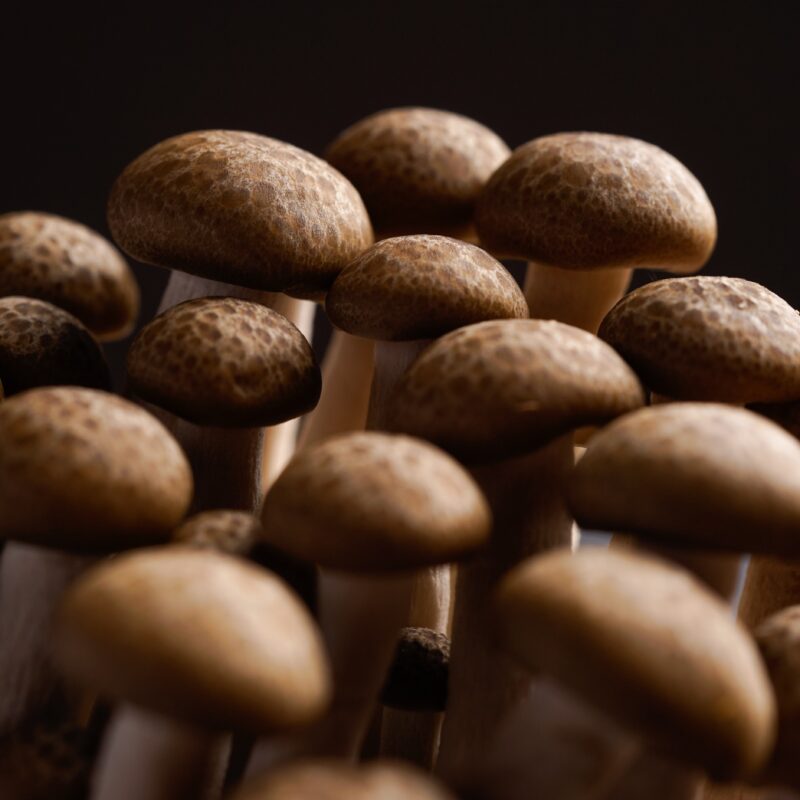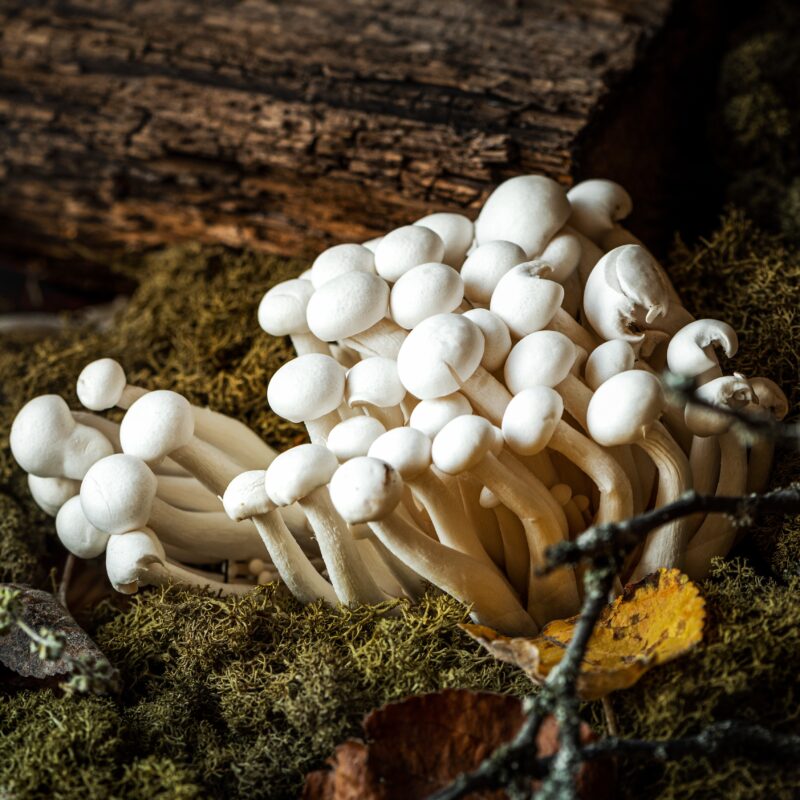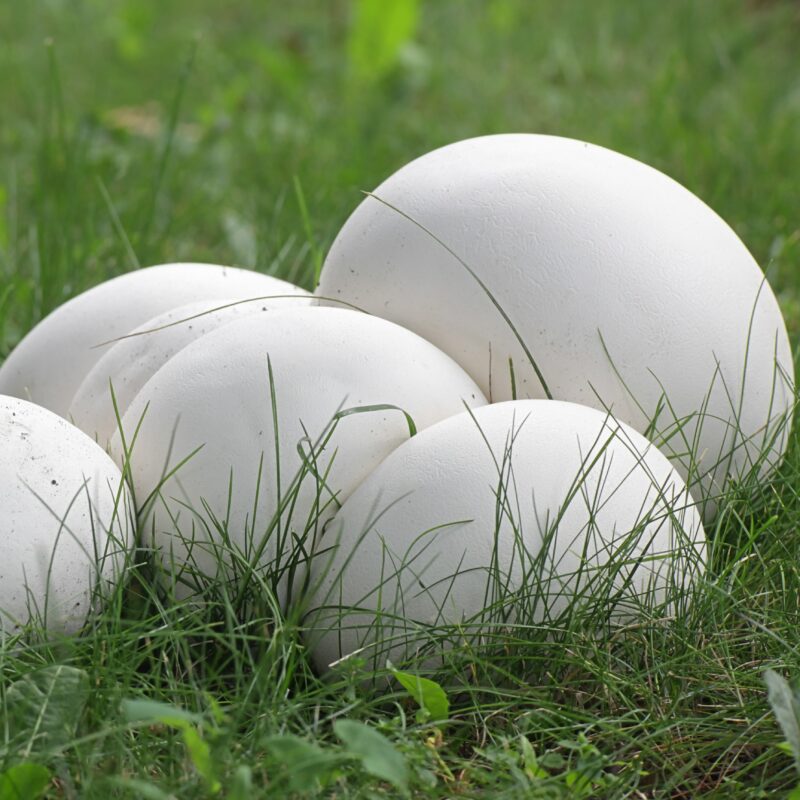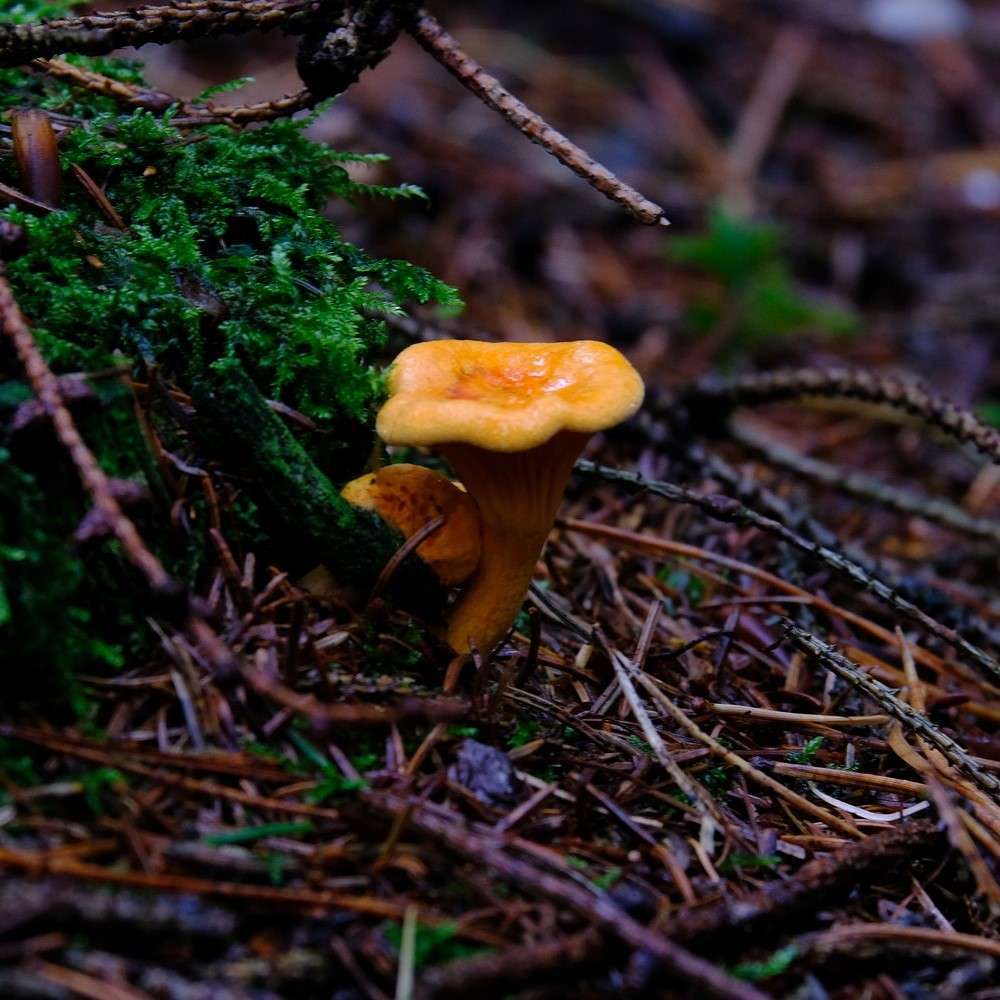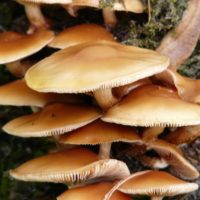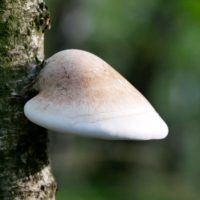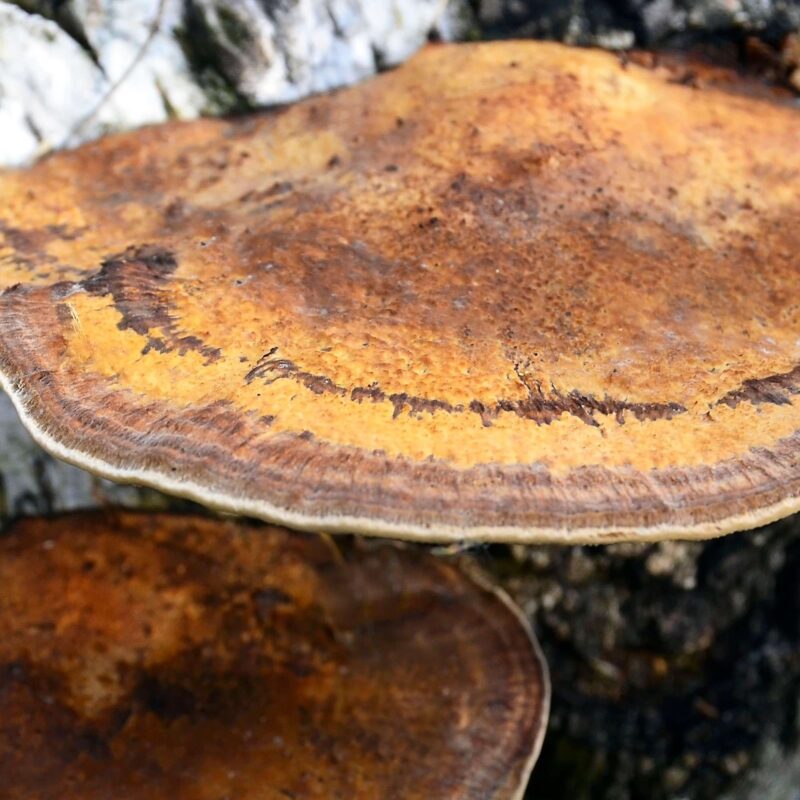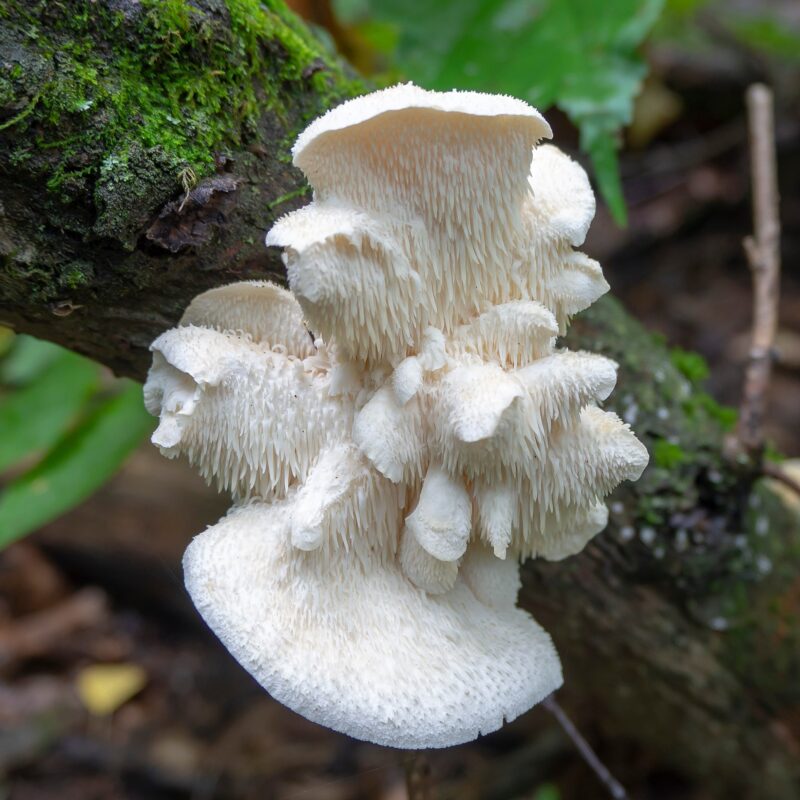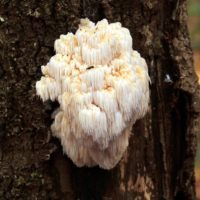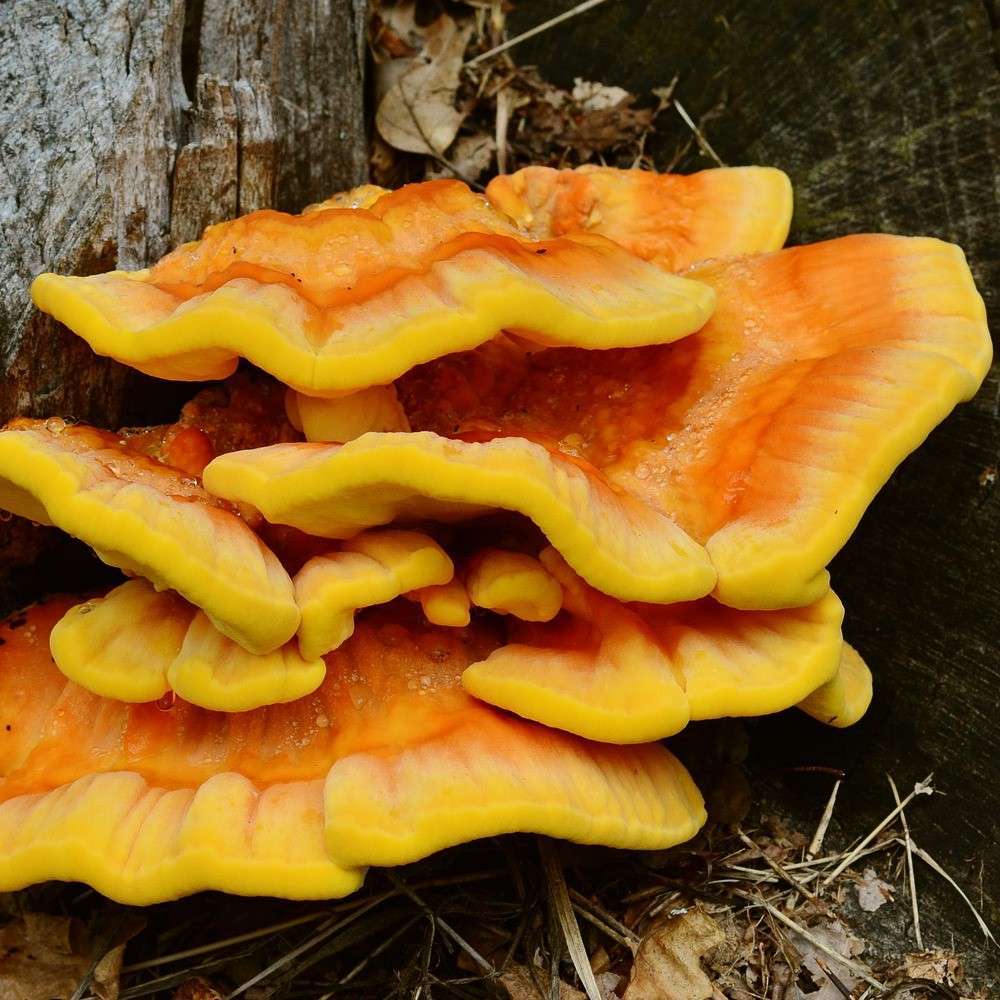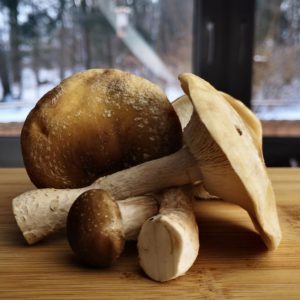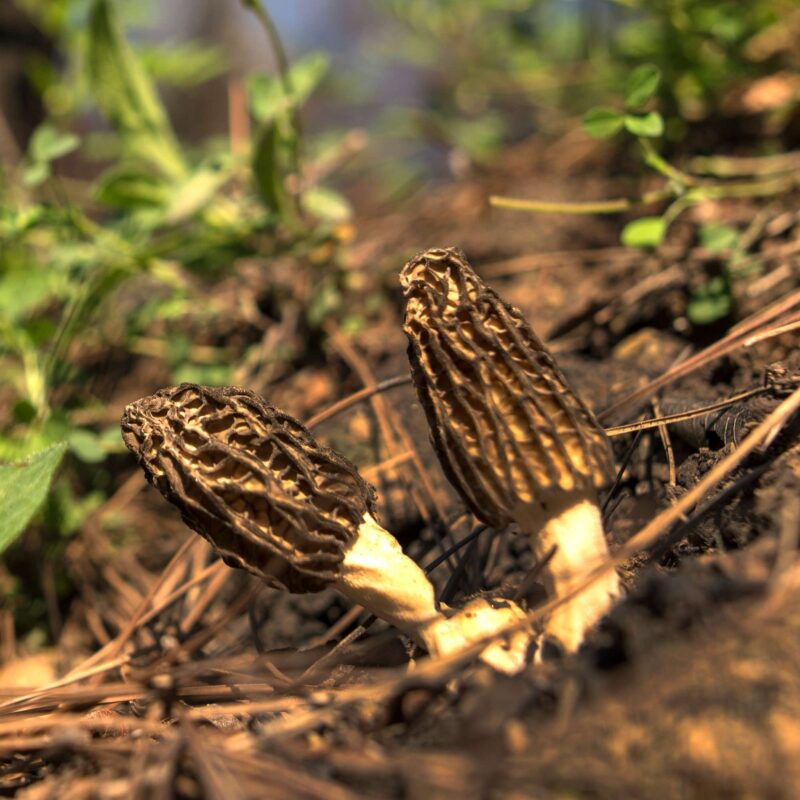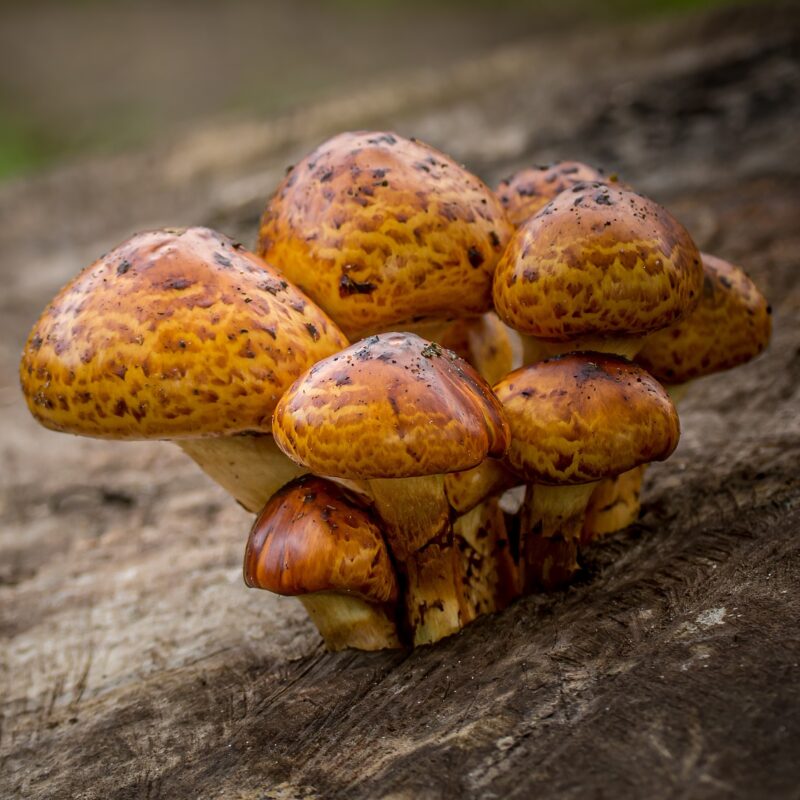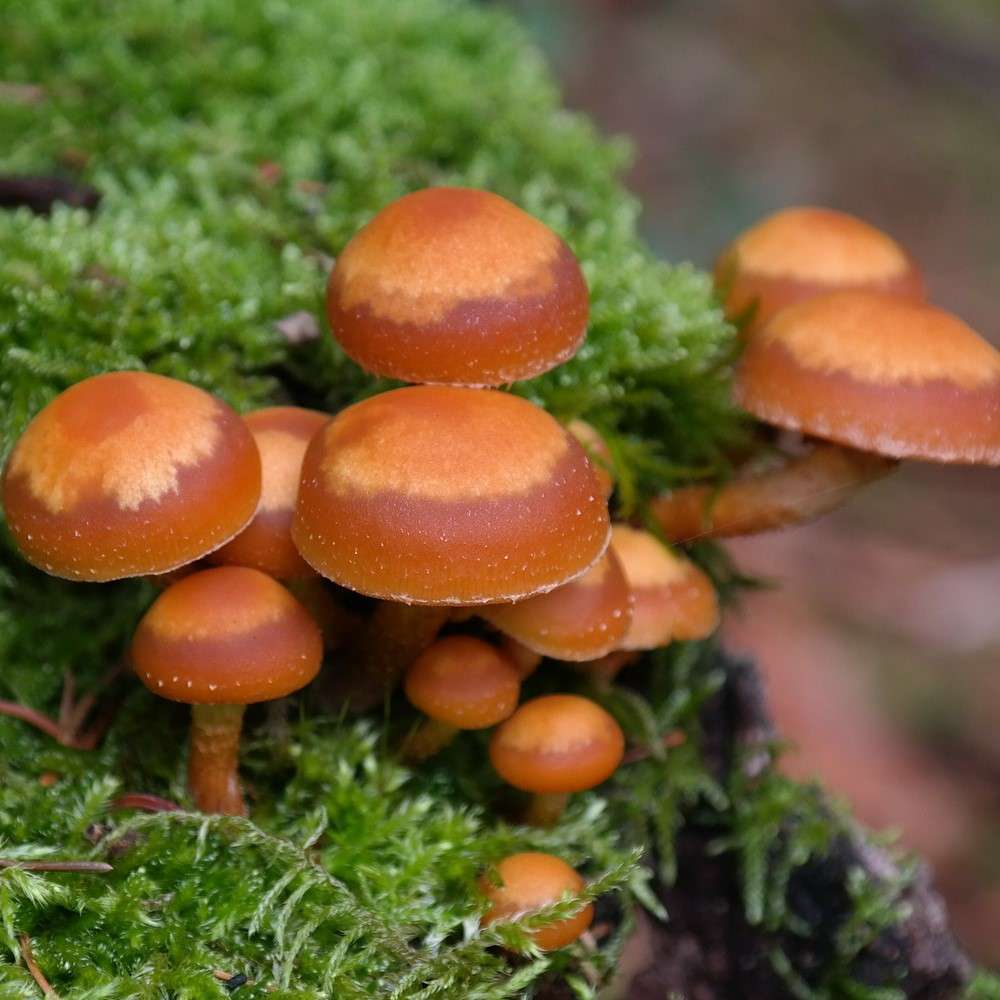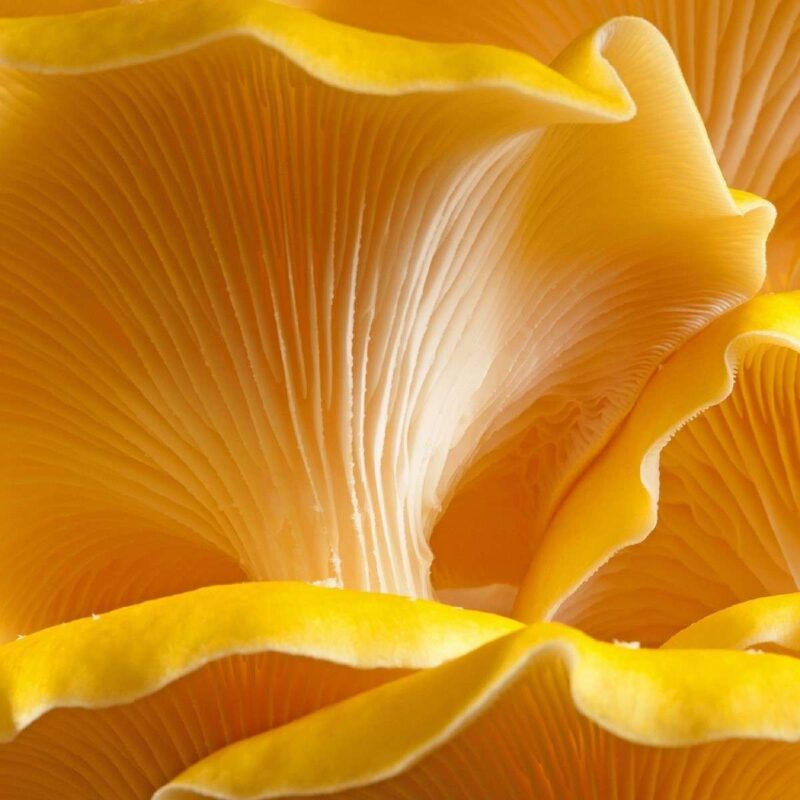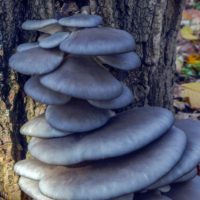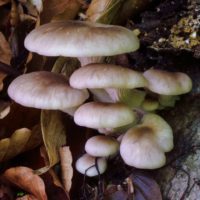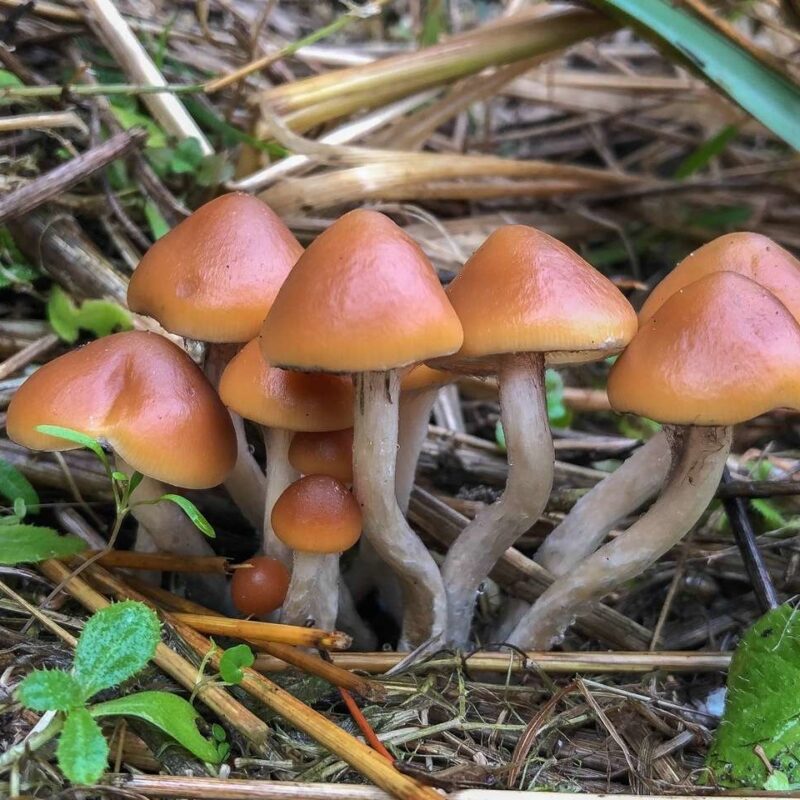Here’s how to unlock the true root of Your Brain
– Without worrying about low quality ingredients
Description
Properties
Grifola frondosa also known as leaf fungus, spatulate porling and by its Japanese name maitake (舞茸, Eng. “dancing mushroom”), is a species of mushroom in the Meripilaceae family (Meripilaceae). It is especially prized in Japan as an edible mushroom and is used in traditional Chinese medicine.
A worldwide common mushroom of the temperate cool zones. The fruiting bodies of Grifola frondosa appear in nature on the root zones of deciduous trees, the fungus lives parasitically and later, after the death of the host tree, also saprobiontically. Nevertheless, it is not classified as a significant progression pest.
Maitake has a unique consistency, as a porling it is generally firmer than most flap mushrooms. In TCM, the rattling sponge has long been known as a vital mushroom and is being studied worldwide for its numerous active ingredients. Now classified as a “superfood.”
In vitro studies of Grifola frondosa at the National Cancer Institute of the powdered fruit bodies (sulfated fraction) of Grifola frondosa show significant activity against the HIV virus (AIDS). The National Institute of Health in Japan announced something similar. Maitake extracts compare favorably to AZT but with no negative side effects. This is the first mushroom confirmed by both Japanese researchers and American scientists to have anti-HIV activity in vitro.
One of the polysaccharide of Maitake fractions responsible for the immunostimulatory activity is the three-branched ß-1,6-glucan known as grifflan. It is found in both mycelium and fungi. Their work demonstrated potent antitumor activity in mice against the murine solid tumor sarcoma 180 in just 35 days, resulting in complete tumor regression in one-third to one-half of the studies. Alkaline extracts have been found to be more effective than hot or cold water infusions. Cancer cells cultured in vitro, aqueous extracts of maitake significantly delayed the reproduction of T-4 leukemia and Hela cervical cancer cells.
The dosage was 1 to 10 milligrams of maitake extract per kilogram of body weight for 10 days. Studies extrapolating this dose from a mouse to a human have not yet been published. dr Fukumi Morishige suggests taking vitamin C with maitake (as well as Ganoderma lucidum) because it helps reduce polysaccharides into smaller, more usable sugar chains and increases their bioavailability. However, an increase in helper “T” cells has been observed in some AIDS patients. In other AIDS patients, the decline in helper T cells is interrupted.
Spleen, bladder, kidney, liver diseases, lower blood pressure, lower cholesterol, inhibit osteoporosis, inhibit tumors, reduce diarrhea, dissolve edema, against allergies, strengthen the immune system, against tumors in the brain and bones.
1. Growing
Growing Procedure
As a porling, Grifola frondosa benefits from a substrate abundantly pimped with aggregates, which must necessarily have a certain “fluffiness” and have only moderate moisture (62-63%). For fruiting initiation and appropriate design of the pin set experience and tact are necessary. Definitely not a beginner mushroom!
Avoid large-scale fruiting and better leave the mushroom only a few fruiting windows. Hatching fruiting bodies under the film must be “exposed” if necessary.
Growing
Agar Culture Media: MYA, MYPA, PDYA, or DFA
Cropping: 3-4 weeks for max. 2 flushes
Containers for fruiting: Polypropylene bags with filter patches for air exchange. Polypropylene bottles or buckets
Biological efficience: ½ to 1 pound mushrooms per 5 to 7 pounds of enriched sterilized hardwood sawdust.
Substrates: Hardwood sawdust, sawdust/shavings/bran, especially oak, poplar, cottonwood, elm, willow and alder
Growing Characteristics
-parasitic and then decomposing, triggers white rot
-only edible when young, very hardy when old
-it can have oversized proportions. A rattlesnake sponge weighing over 20 kg was found in Ribnitz-Damgarten in 2018.
S
|
P
|
F
|
|
|---|---|---|---|
Temp °C |
21-24 | 10-16 | 13-16(18) |
Relative Humidity % |
95-100 | 90-95 | 75-85 |
Duration d |
5-10 | 10-14 | 14-21 |
CO2 ppm |
<40000 | 2000-5000 | <1000 |
FAE per h |
0-1 | 3-6 | 4-8 |
Light lux |
– | 100-500 | 500-1000 |
Natural Habitat
Grifola frondosa is found on stumps or at the base of dead or dying hardwoods, particularly oak, elm, maple, eucalyptus, beech and occasionally larch. G. frondosa is a “white rot” fungus. Although found on the roots of dying trees, from summer to late autumn.
Maitake grows mostly at the base of old oaks (Quercus), but more rarely on lime trees (Tilia), chestnuts (Castanea), beeches (Fagus) and parasitizes on their roots. It causes white rot in the wood. As a rule, the fungus appears in the same place several years in a row.
The distribution range of Grifola frondosa extends from the subtropics to the northern temperate zone. In North America, the range is restricted to the northeastern United States and Canada; however, isolated occurrences have been found further west. The westernmost occurrence is in Idaho. In Japan, the mushroom thrives naturally only in the northeast of the country.
2. Identification
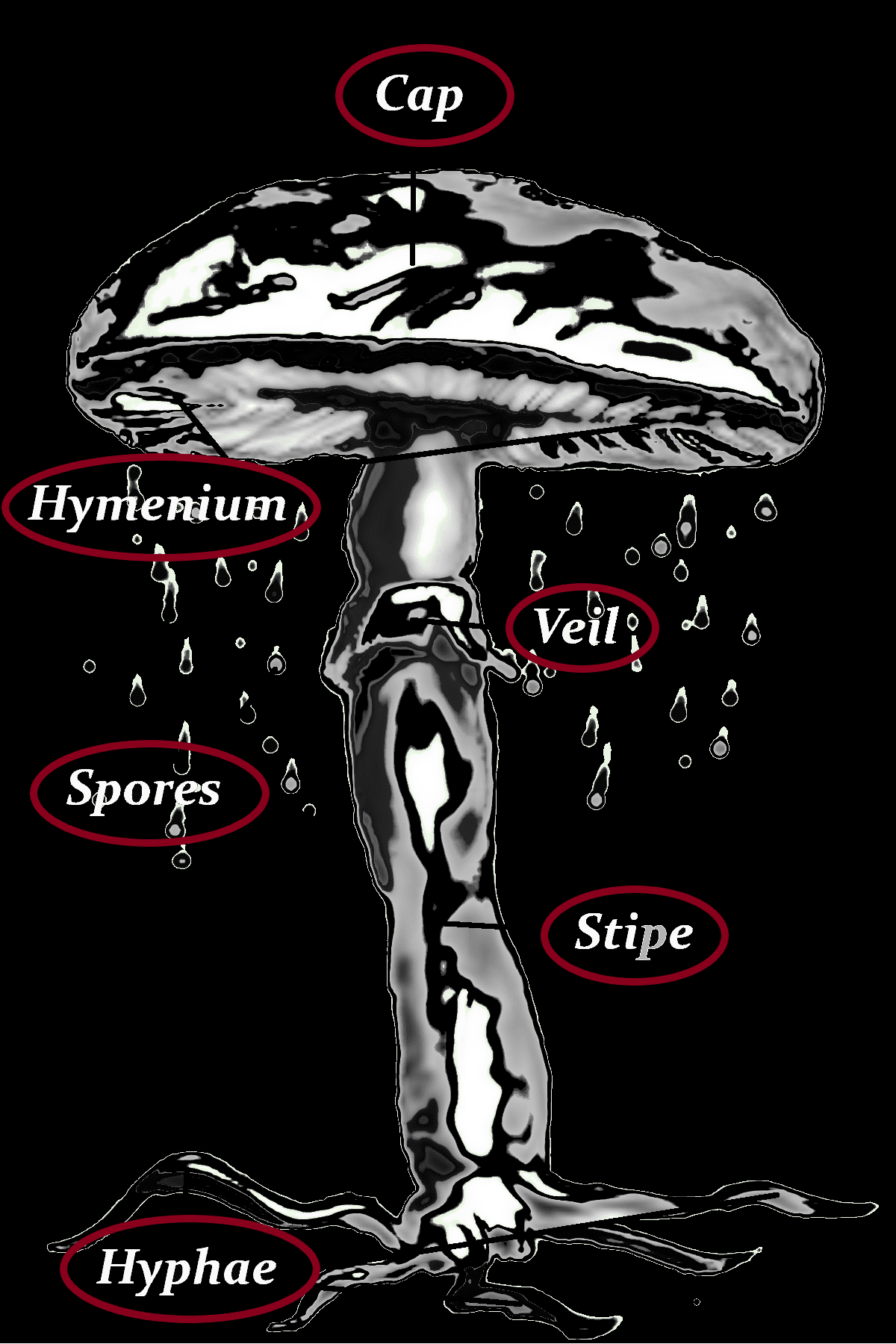
Cap
-displaced or distinct
-dark grey-brown when young
-lighter gray with age
-several overlapping caps
-2–10 cm in diameter
-arising from branched stems, eccentrically joined, and sharing a common base
-young fruit bodies are adorned with fine gray fibrils
Hymenium
-decurrent
-pores
-white
Spores
-white
-slightly elliptic (ovate)
-smooth
-translucent
-6–7 × 3.5–5 µ
-dimitic hyphae system
-pincer connections present on generative hyphae
-rarely branching
-with skeletal hyphae
-not septate
Stipe
bare
Hyphae
-white
-longitudinally linear
-possibly cottony on enriched agar medium, not rhizomorphic
-grows unevenly without forming the circular colonies typical of most fungi
-develops light tan tones along the outer peripheral edges with age
-mycelia develop heavily speckled yellowish to orange-brown zones that give off a yellowish-orange metabolite
Danger of confusion
Hericium Flagellum, Hericium Coralloides, Climacodon Septentrionalis, Mucronella Bresadolae
Veil
–
3. Consuming
Gourmet
An edible mushroom with a very strong aroma, which unfolds best in a cream sauce or risotto. For me, it almost belongs more in the category of seasoning mushroom. Even dried specimens retain the characteristic fragrance for a long time. You can eat maitake raw or cooked, bake, grill, braise or roast. Goes well with parmesan and other noble hard cheeses.
Flesh
light brown
Taste
mild
Smell
-richly mushroomy and exceptionally floury, sometimes sweet
-as the mushrooms begin to rot, a strong fishy odor will develop.
Nutritional content per 100g
| Proximates: | |
| Water | 90.4g |
| Energy (Atwater General Factors) | 38kcal |
| Energy (Atwater Specific Factors) | 31kcal |
| Nitrogen | 0.35g |
| Protein | 2.2g |
| Total lipid (fat) | 0.26g |
| Ash | 0.56g |
| Carbohydrates: | |
| Carbohydrate, by difference | 6.6g |
| Minerals: | |
| Calcium, Ca | <2.49mg |
| Iron, Fe | 0.21mg |
| Magnesium, Mg | 11mg |
| Phosphorus, P | 72mg |
| Potassium, K | 260mg |
| Sodium, Na | 0mg |
| Zinc, Zn | 0.76mg |
| Copper, Cu | 272mg |
| Manganese, Mn | 58mg |
| Selenium, Se | 3.3µg |
| Vitamins and Other Components: | |
| Thiamin | 0.01mg |
| Riboflavin | 269mg |
| Niacin | 6.76mg |
| Vitamin B-6 | 71mg |
| Biotin | 33µg |
| Vitamin D (D2 + D3) | 64IU |
| Vitamin D (D2 + D3) | 1.6µg |
| Vitamin D2 (ergocalciferol) | 1.6µg |
| Vitamin D4 | 0.14µg |
| Amino acids: | |
| Ergothioneine | 2mg |
© U.S. Department Of Agriculture
4. Data med, edible
other names
| Ainu | ユㇰ カルㇱ |
| Chinesisch (traditionell) | 灰樹花菌 |
| Chinesisch (vereinfacht) | 灰树花菌 |
| Deutsch |
Gemeiner Klapperschwamm
|
| Deutsch | Laubporling |
| Deutsch |
Spatelhütiger Porling
|
| Dänisch | Tueporesvamp |
| Englisch |
hen of the woods
|
| Finnisch | koppelokääpä |
| Französisch |
Polypore en touffe
|
| Französisch | Poule des Bois |
| Japanisch | マイタケ |
| Litauisch |
Kuokštinė grifolė
|
| Niederländisch | Eikhaas |
| Norwegisch | korallkjuke |
| Ojibwe |
Wapun ojishtad
|
| Romaji | Maitake |
| Russisch |
Грифола курчавая
|
| Schwedisch | korallticka |
| Tschechisch |
trsnatec lupenitý
|
| Türkisch |
Maytake mantarı
|
| Ungarisch | Ágas tapló |
| Wissenschaftl. Name |
Grifola frondosa
|
| Wissenschaftl. Name |
Polyporus frondosus
|
other names
Maitake (“Dancing Mushroom”), Kumotake (“Cloud Mushroom”), Hen-Of-The-Woods, The Dancing Butterfly Mushroom, Klapperschwamm, Maitake, Spatelhütiger Porling, Laubporling, Kamm-Porling Graue Gans, Gemeiner Klapperschwamm, Polyporus Albicans, Grifola Frondosa Forma Intybacea, Grifola Frondosa Var. Intybacea, Grifola Albicans
| Kingdom | Fungi |
|---|
| Division | Basidiomycota |
| Class | Agaricomycetes |
| Order | Polyporales |
| Family | Meripilaceae |
| Genus | Grifola |
| Species | G. frondosa |
| Ecology | Parasitic |






